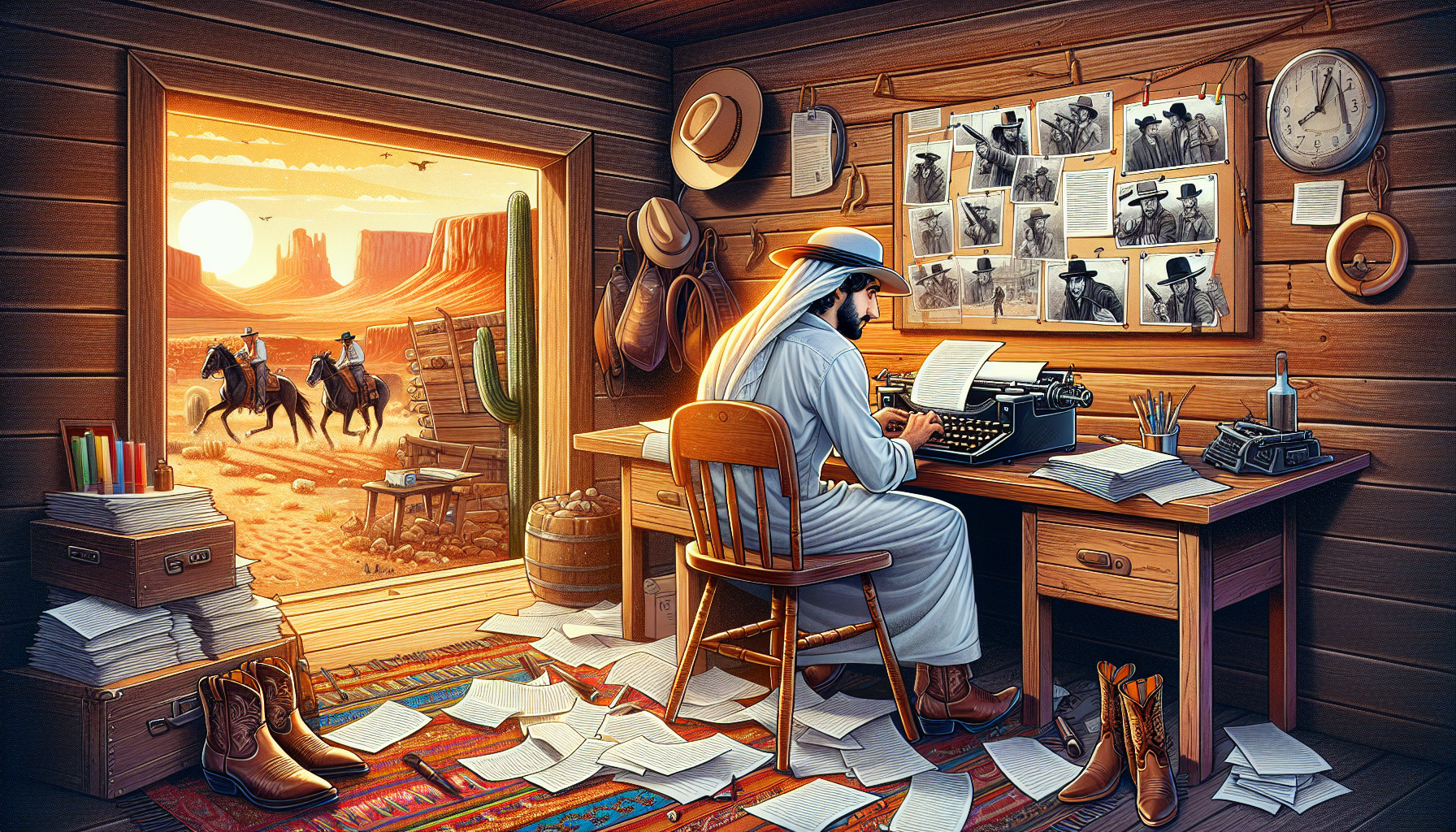
Yeehaw, pardner! Gather ’round the virtual campfire as we embark on a wild journey through the dusty trails, saloons, and high-noon showdowns of Western screenwriting. Whether you’re dreaming of penning the next “Unforgiven” or conjuring up a cult classic rooted in the Wild West, saddle up. Crafting a rip-roaring Western screenplay demands grit, guts, and more than a touch of frontier panache.
Wagons Ho! Nailing the Plot Structure
Creating the backbone of your Western screenplay is akin to ensuring your covered wagon is fit for the Oregon Trail. The classic three-act structure works just fine out in the wilderness, but it can use a good coat of desert dust and a splash of whisky.
- Act One: Set the stage. Introduce your rugged protagonist (who’s probably nursing a dramatic past) and the dusty, atmospheric town that is simultaneously lawless and unnervingly quiet. Cue tumbleweed…
- Act Two: Turn up the heat. Draw in conflicts like the rickety fence posts of the local ranch. Enter the dastardly outlaw or corrupt sheriff threatening the peace. Your hero faces confrontations, internal struggles, and no small amount of horse riding.
- Act Three: Wrangle in the climax. The standoff at high noon (or midnight) where your hero either lasso’s victory or rides into the sunset for the promise of tomorrow. Someone’s delivering a monologue; someone’s probably getting shot. It’s all very dramatic.
Spurs and Characters: Crafting Your Cast
A Western is nothing without its iconic characters. From the gun-slinger with a tentative moral code to the town drunk delivering wisdom only found at the bottom of a whisky bottle, your characters need to be as robust as a buffalo and twice as memorable.
The Reluctant Hero: He’s seen things and done things he isn’t proud of, but deep down, his moral compass points strictly north. Give him a shadowy past and eyes that squint against the sun’s glare.
The Villain: Mustache? Optional. Malevolent grin? Required. This charlatan is the scourge of the town, scheming for money, land, or pure anarchy.
The Love Interest: A damsel who’s definitely NOT in distress. She’s as tough as badger hide and twice as sassy. She might save the hero as much as he saves her. Equality in the Wild West, y’all!
The Sidekick: Full of charm, loyalty, and a one-liner for every near-death experience. Whether it’s an old friend or a feisty youngster, this character lightens the heavy burden of drama.
Shooting from the Hip: Dialogue and Lingo
The West thrived on its unique vernacular, a gold mine of expressions and colloquialisms. It’s critical you sprinkle your script with dialogue that not only feels authentic but has enough zingers to keep an outlaw on their toes.
Keep it Snappy: Economy is key. Heroes of the West didn’t have time for soliloquies – a snappy retort or a gruff acknowledgment packed with subtext will do just fine.
Period-Appropriate Slang: Ensure dialogue fits the era, but don’t overdo it. An authentic “Howdy, partner” has mileage, but moderations ensure your screenplay remains accessible.
Catch Phrases: Give your characters lines that echo. A memorable one-liner can brandish just as much impact as a six-shooter.
Setting the Scene: Atmosphere and Authenticity
The environment in a Western screenplay is as pivotal as its characters. The rolling plains, searing sun, and the haunting silhouette of an approaching rider are all part of the quintessential Western experience. Use vivid descriptions to bring the setting alive – readers should almost taste the dust and hear the creak of leather.
Descriptive Flair: Paint a picture with your words. Instead of writing It’s hot, say The sun blazed down as if hell itself was cradling the town in its palms.
Details Matter: From the mark of a rattlesnake on the path to the smell of gunpowder wafting through the saloon, the little touches make your world real and immersive.
Rewriting: The Final Frontier
Even the most stalwart cowboys know that every good adventure requires multiple attempts. Don’t just write and ride off into the sunset – editing and polishing are where your screenplay matures from a ragged colt to a prime stallion.
Be Ruthless: Not every scene should make the cut. If it doesn’t serve the plot or develop characters – let it bite the dust.
Seek Out Rangers: Trusted friends, mentors, or industry professionals can provide invaluable insight. Just like a cowboy needs his posse, you need your critical readers.
With these golden nuggets of wisdom, you’re well-equipped to conquer the art of Western screenwriting. So, mount up, write with a sure hand, and create tales that echo out into the limitless horizon like a cowboy’s cry at dusk. Let’s ride! Yeehaw!






